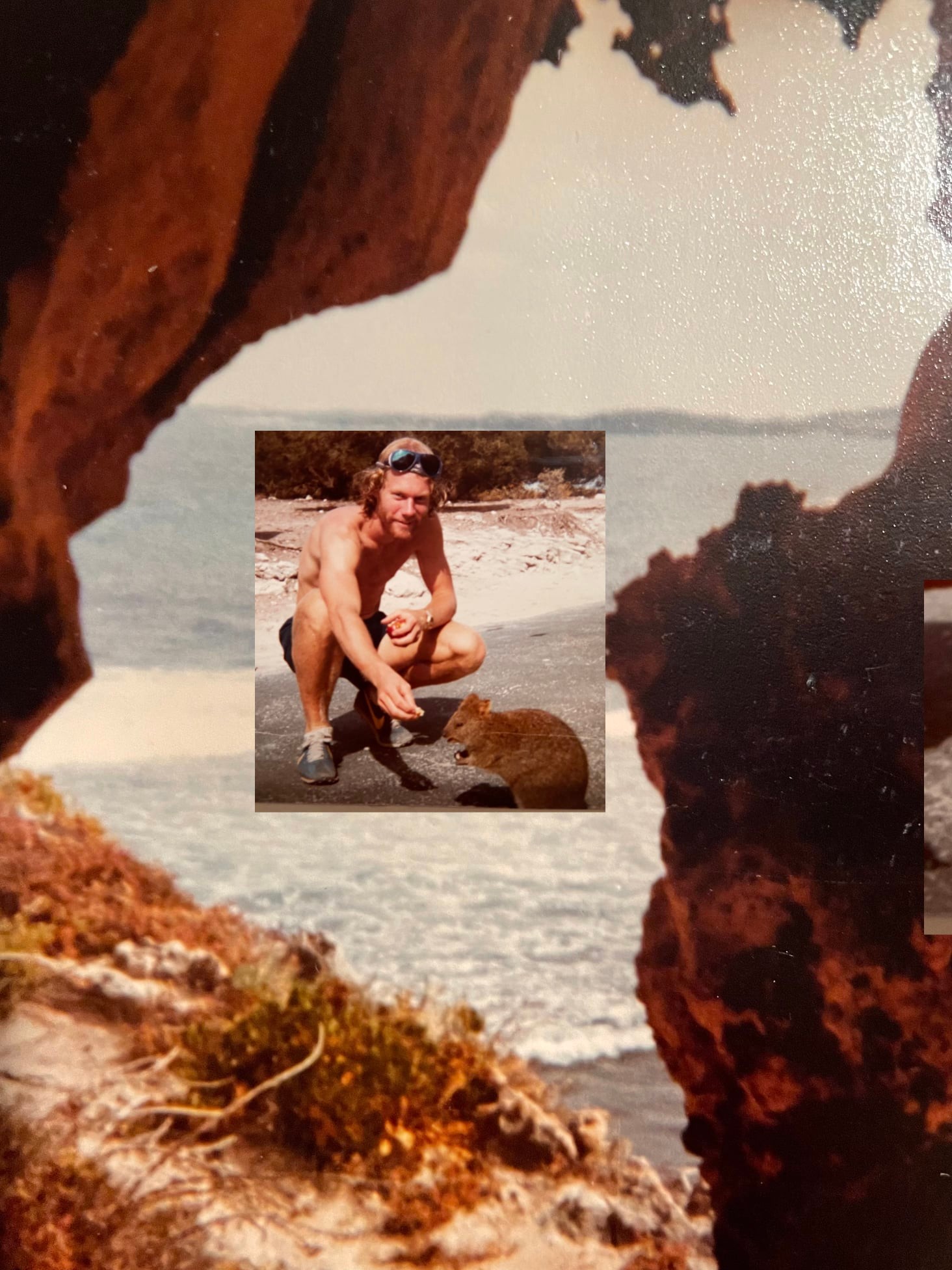FEBRUARY 7, 2022 – During my two-month sojourn in NZ and Australia, I’d encountered many Europeans who’d ventured there via India. Time—and illness—on the Subcontinent seemed to be a rite of passage. No traveler had not experienced gastrointestinal problems, and everyone emphasized that no matter how much you heard or read about India, nothing could prepare you for a visit there.
These universal comments echoed with the waves as I strolled Cottesloe Beach in Perth and contemplated the next phase of my travels, northwest across the Indian Ocean.
While I awaited the day of my departure for Mumbai (then, Bombay), I made some purchases—an Instamatic camera and a micro-cassette recorder to replace malfunctioning equipment, and, ludicrously, two bags of granola to ease my way into the Indian diet.
The highlight of Perth, however, wasn’t in Perth. It was a short voyage to Rottnest Island, 20 km offshore. It was terra firma farthest from home. I could travel to no farther soil without being closer.
“Rottnest” is a misnomer—in Dutch, the language of its first European visitors, and in English, the British, being the modern claimants of the place first inhabited some 38,000 years ago, when a land bridge connected Rottnest and the mainland. The island’s main attractions is the marsupial quokka, which, from a distance, appears as a large rat—(“Rot,” in Dutch)—but close-up, looks (and behaves) like a tame, harmless, cheerful Pixar movie character. As the Old Dutch approached, they thought the place was infested with “Rotts,” hence the name, “Rott-nest,” or “rat nest.” To Anglophone and the nederlandstalig alike, “Rottnest” sounds, looks like “rottenest,” the opposite of the island’s paradisiacal character.
For the better part of a day, I rode a rented bicycle around the island, made the acquaintance of the marsupial residents, and with a few other sojourners, enjoyed the unspoiled piles of sand splashed in sunshine that made the place a pleasant destination.
Another memory from Perth was a visit to King’s Park. To cover ground, I rented a park bicycle. I was soon riding along countless, mature eucalyptus trees that bordered the winding avenues. By each tree was a plaque naming an Australian soldier who’d died in the two big 20th century wars of the British Empire (60,000 – WW I; 27,000 – WW II). As to WW I, especially, I remember well my thoughts, emotions as I passed all those trees: It was not their fight; how criminal that so many young, promising, innocent lives were sacrificed for “Empire.”
On the eve of my departure for the crown jewel of that former empire, I treated myself to the last of Western comforts—for the next eight weeks. I ate a gargantuan meal at a “Swedish Smörgåsbord,” of all places, and saw the movie, Tess, based on Thomas Hardy’s classic, Tess of the d’Urbervilles.
As I write this, I’m reminded of Hardy’s other classic, Far from the Madding Crowd. Little in my naïveté did I then realize what a “madding crowd” awaited me in India.
(Remember to subscribe to this blog and receive notifications of new posts by email.)
© 2022 by Eric Nilsson
